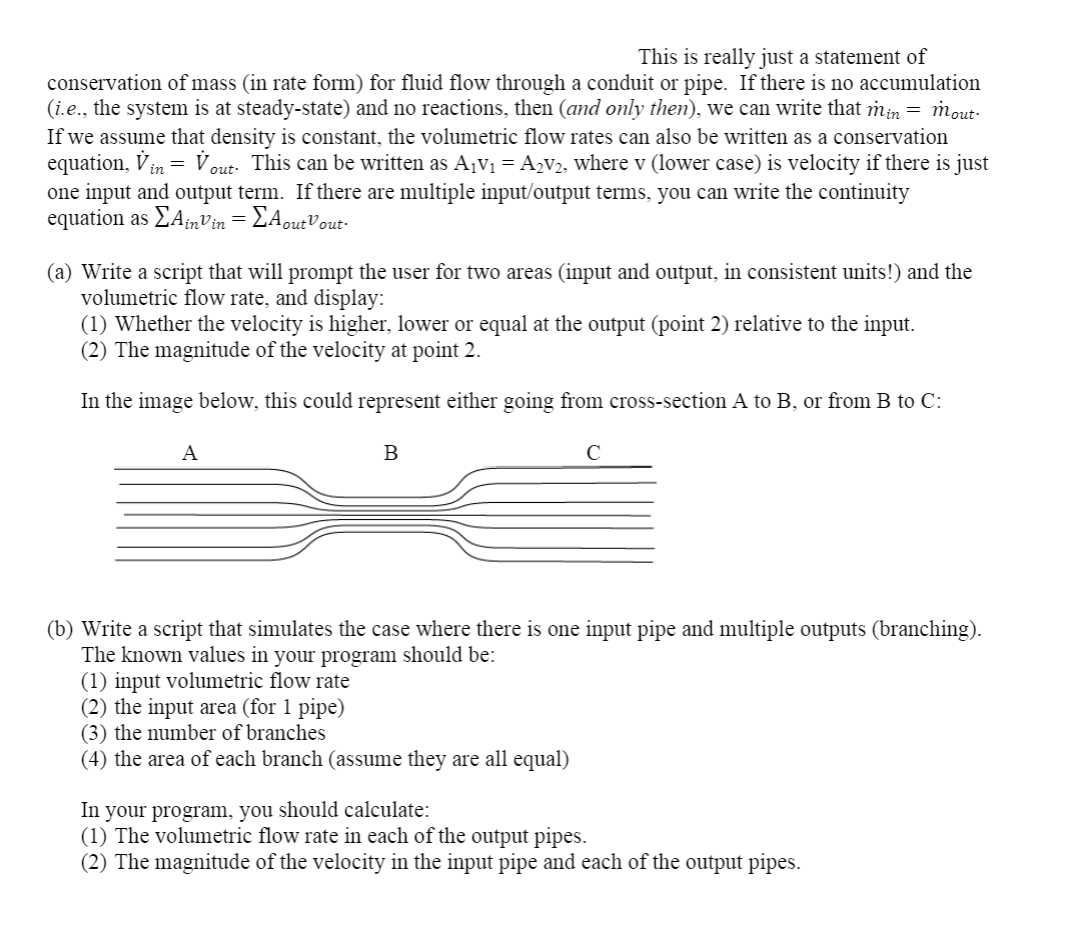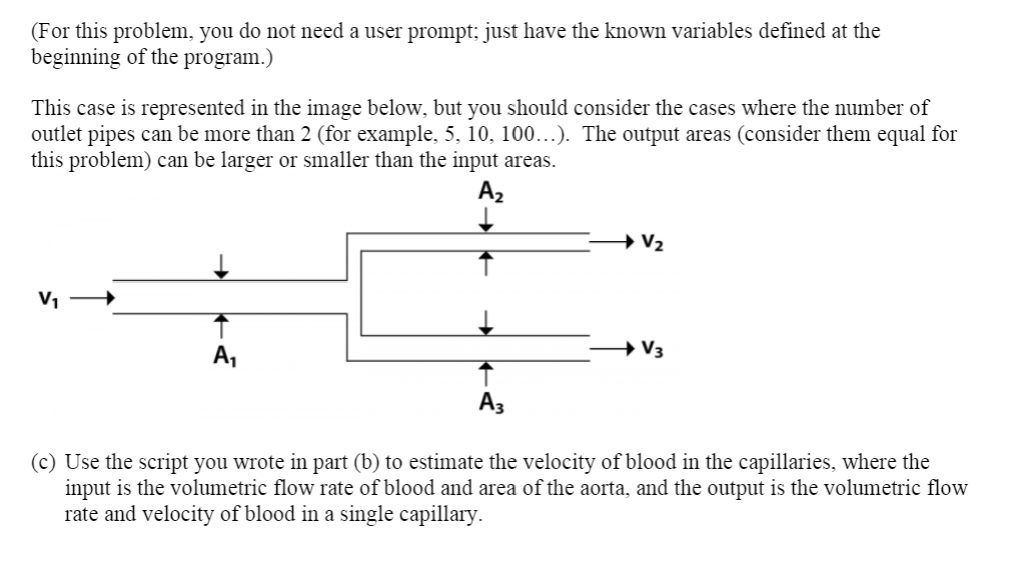must use matlab **code** 

This is really just a statement of conservation of mass (in rate form) for fluid flow through a conduit or pipe. If there is no accumulation (i.e., the system is at steady-state) and no reactions, then (and only then), we can write that min = mout- If we assume that density is constant, the volumetric flow rates can also be written as a conservation equation, V in = V out. This can be written as AjV1 = A2V2, where v (lower case) is velocity if there is just one input and output term. If there are multiple input/output terms, you can write the continuity equation as AinVin = {AoutV out- (a) Write a script that will prompt the user for two areas (input and output, in consistent units!) and the volumetric flow rate, and display: (1) Whether the velocity is higher, lower or equal at the output (point 2) relative to the input. (2) The magnitude of the velocity at point 2. In the image below, this could represent either going from cross-section A to B, or from B to C: A B (b) Write a script that simulates the case where there is one input pipe and multiple outputs (branching). The known values in your program should be: (1) input volumetric flow rate (2) the input area (for 1 pipe) (3) the number of branches (4) the area of each branch (assume they are all equal) In your program, you should calculate: (1) The volumetric flow rate in each of the output pipes. (2) The magnitude of the velocity in the input pipe and each of the output pipes. (For this problem, you do not need a user prompt; just have the known variables defined at the beginning of the program.) This case is represented in the image below, but you should consider the cases where the number of outlet pipes can be more than 2 (for example, 5, 10, 100...). The output areas (consider them equal for this problem) can be larger or smaller than the input areas. A2 V2 V A V3 Az (c) Use the script you wro in part (b) to estimate the velocity of blood in the capillaries, where the input is the volumetric flow rate of blood and area of the aorta, and the output is the volumetric flow rate and velocity of blood in a single capillary. This is really just a statement of conservation of mass (in rate form) for fluid flow through a conduit or pipe. If there is no accumulation (i.e., the system is at steady-state) and no reactions, then (and only then), we can write that min = mout- If we assume that density is constant, the volumetric flow rates can also be written as a conservation equation, V in = V out. This can be written as AjV1 = A2V2, where v (lower case) is velocity if there is just one input and output term. If there are multiple input/output terms, you can write the continuity equation as AinVin = {AoutV out- (a) Write a script that will prompt the user for two areas (input and output, in consistent units!) and the volumetric flow rate, and display: (1) Whether the velocity is higher, lower or equal at the output (point 2) relative to the input. (2) The magnitude of the velocity at point 2. In the image below, this could represent either going from cross-section A to B, or from B to C: A B (b) Write a script that simulates the case where there is one input pipe and multiple outputs (branching). The known values in your program should be: (1) input volumetric flow rate (2) the input area (for 1 pipe) (3) the number of branches (4) the area of each branch (assume they are all equal) In your program, you should calculate: (1) The volumetric flow rate in each of the output pipes. (2) The magnitude of the velocity in the input pipe and each of the output pipes. (For this problem, you do not need a user prompt; just have the known variables defined at the beginning of the program.) This case is represented in the image below, but you should consider the cases where the number of outlet pipes can be more than 2 (for example, 5, 10, 100...). The output areas (consider them equal for this problem) can be larger or smaller than the input areas. A2 V2 V A V3 Az (c) Use the script you wro in part (b) to estimate the velocity of blood in the capillaries, where the input is the volumetric flow rate of blood and area of the aorta, and the output is the volumetric flow rate and velocity of blood in a single capillary








